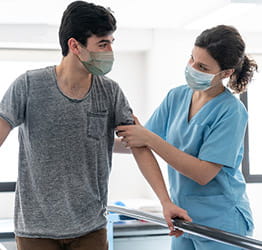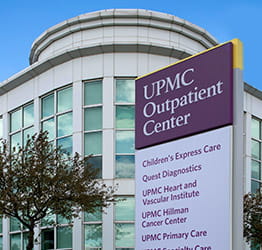What Is Thrombolytic Therapy for Stroke Patients?
Thrombolytic therapy uses a clot-dissolving medication (thrombolytic) to treat ischemic stroke, which happens when a blood clot blocks blood flow to your brain.
The medications are delivered to your bloodstream through an intravenous (IV) line or directly to the location of a blood clot using a small, thin tube known as a catheter. They are most effective when given within a few hours of the start of your stroke symptoms.
What Conditions Do We Treat?
Thrombolytic therapy using clot-busting medications is often used as an emergency treatment for ischemic stroke.
However, it also can be used to treat other conditions, including:
Who’s Eligible for Thrombolytic Therapy?
You may be eligible for thrombolytic therapy if you are having an ischemic stroke or another condition that occurs when a blood clot blocks blood flow.
Although thrombolytic therapy is an effective emergency treatment for stroke and other conditions, it is not right for everyone.
Clot-busting medications can increase your risk of bleeding, so they may not be appropriate for people who:
- Are older.
- Bleed easily.
- Have had a recent surgery.
- Have high blood pressure.
- Take blood-thinning medications.
What Thrombolytic Therapy Treatments Do We Offer?
Several types of medications can be used for intravenous thrombolysis. Your doctor will select the medication that will most effectively treat your symptoms with the lowest risk of complications.
Common clot-busting medications used to treat stroke include:
- Alteplase (tPA) — The most common medication used to treat ischemic stroke.
- Tenecteplase (TNKase) — Can effectively dissolve clots with a lesser risk of bleeding.
Types of thrombolytic therapy we offer include:
- Intra-arterial thrombolysis (IAT) — Also called catheter-directed thrombolysis, this therapy delivers medication directly to the blood clot site using a small, thin tube called a catheter.
- Intravenous thrombolysis — Also called systemic thrombolysis, this therapy involves delivering clot-busting medications to your bloodstream using an intravenous (IV) line.
What Can I Expect?
When you arrive at the hospital Emergency Department, your doctors will perform tests to diagnose a stroke or another condition caused by a blood clot. Your doctor may recommend thrombolytic therapy if you are diagnosed with stroke, your symptoms are severe, and the treatment is safe for you.
Intravenous thrombolysis
Intravenous thrombolysis is given through an IV in your hand or arm. Your care team will administer the clot-busting medication through your IV line.
The medication will travel through your bloodstream until it reaches and dissolves your blood clot.
IAT
You will receive sedative medication to help you relax and a local anesthetic, so you do not feel any pain.
Your doctor will:
- Make a small incision, commonly in your neck or groin.
- Insert the catheter into your blood vessel.
- Use imaging guidance to advance the catheter through your blood vessels to the blood clot site.
- Administer clot-busting medication to dissolve your blood clot. In some cases, your doctor may use a device on the tip of the catheter to remove the clot (mechanical thrombectomy) or insert a stent to help a narrowed artery stay open.
- Remove the catheter and close your incision.
After your procedure, you will need to stay in the hospital for several days. During your stay, your care team will watch closely for signs of bleeding and other complications. You may also have imaging tests to make sure the blood clot dissolves as expected.
Why Choose UPMC for Thrombolytic Therapy?
When you choose UPMC for thrombolytic therapy, you will receive:
- Access to world-class stroke expertise — UPMC is among the world’s best multidisciplinary stroke centers, offering comprehensive care using the latest medications and therapies.
- A full range of treatment options — We offer nonsurgical and minimally invasive stroke care, as well as traditional open surgical procedures, allowing us to effectively treat all types of strokes while reducing your risk of complications.
- Multidisciplinary care — We partner with neurologists, rehabilitation specialists, and other medical experts to provide complete care that optimizes your recovery and quality of life.
By UPMC Editorial Staff. Last reviewed on 2025-10-23.
















